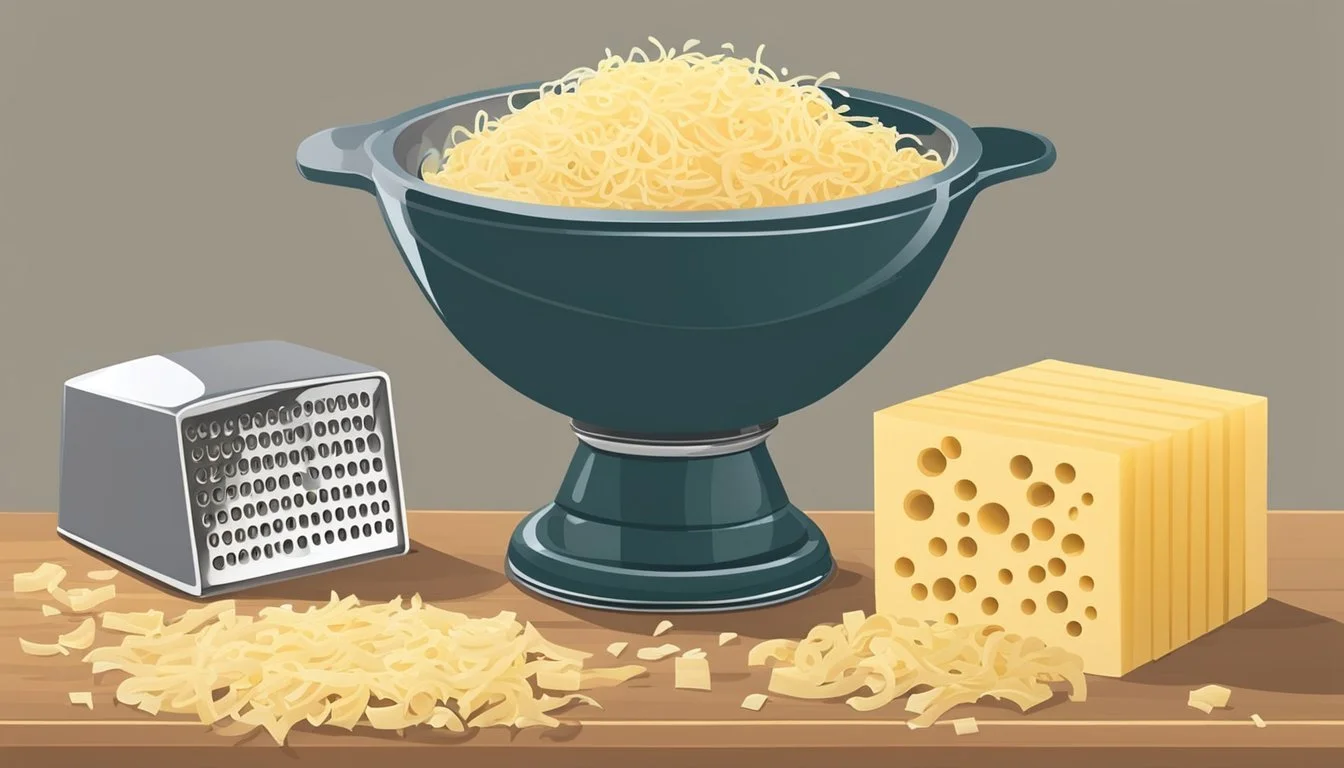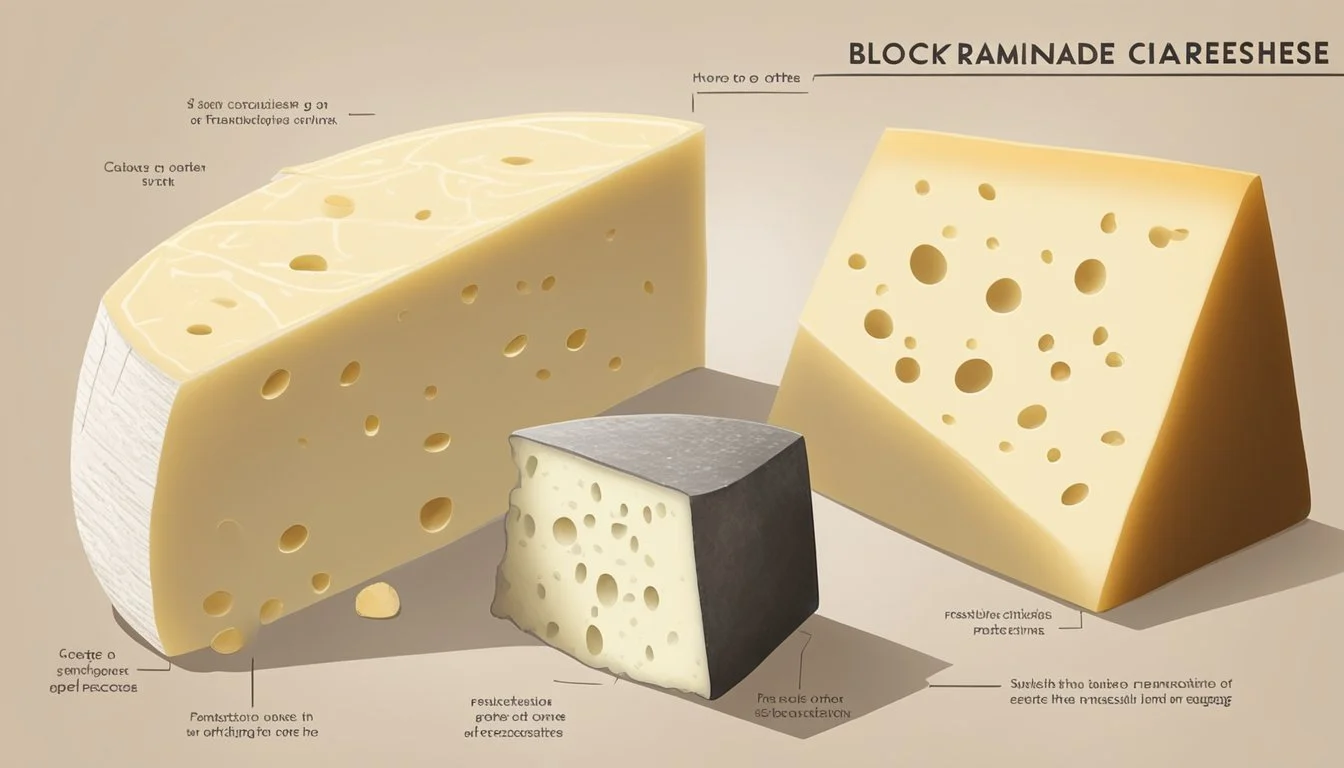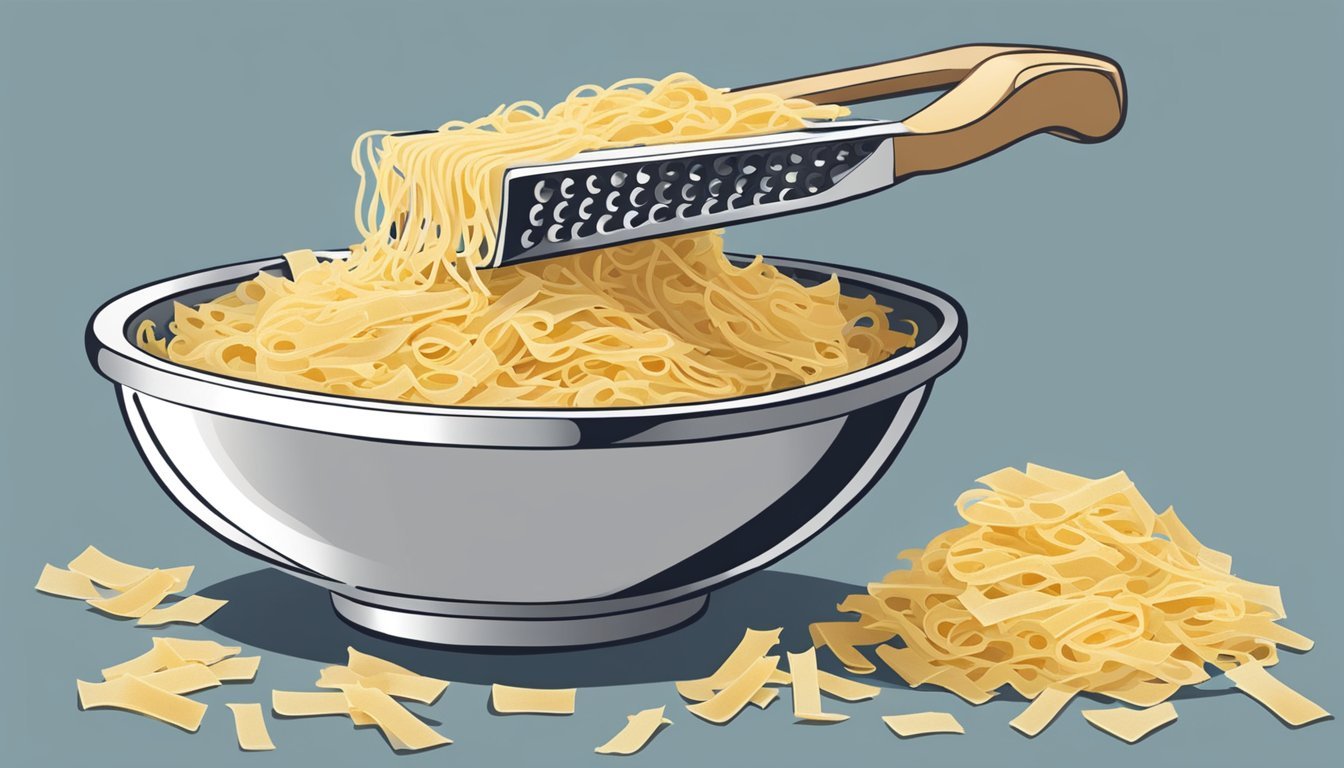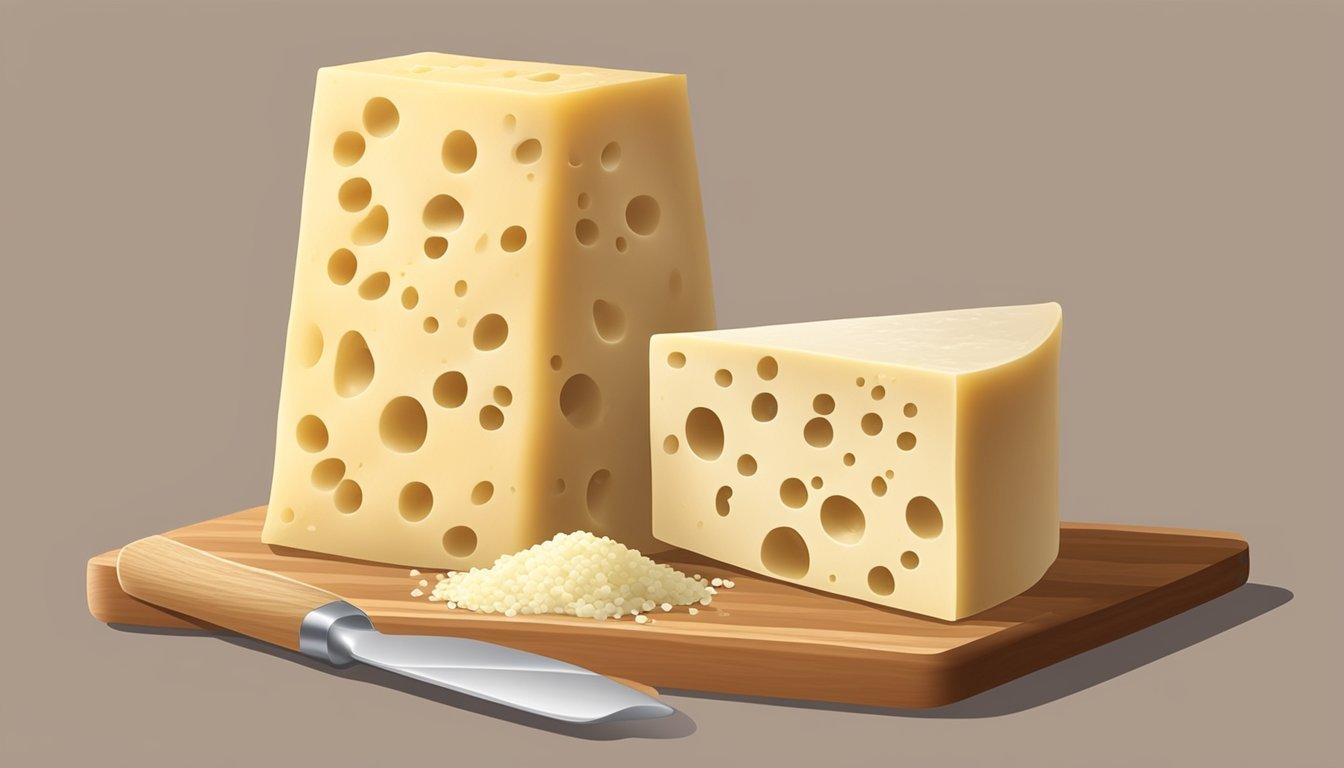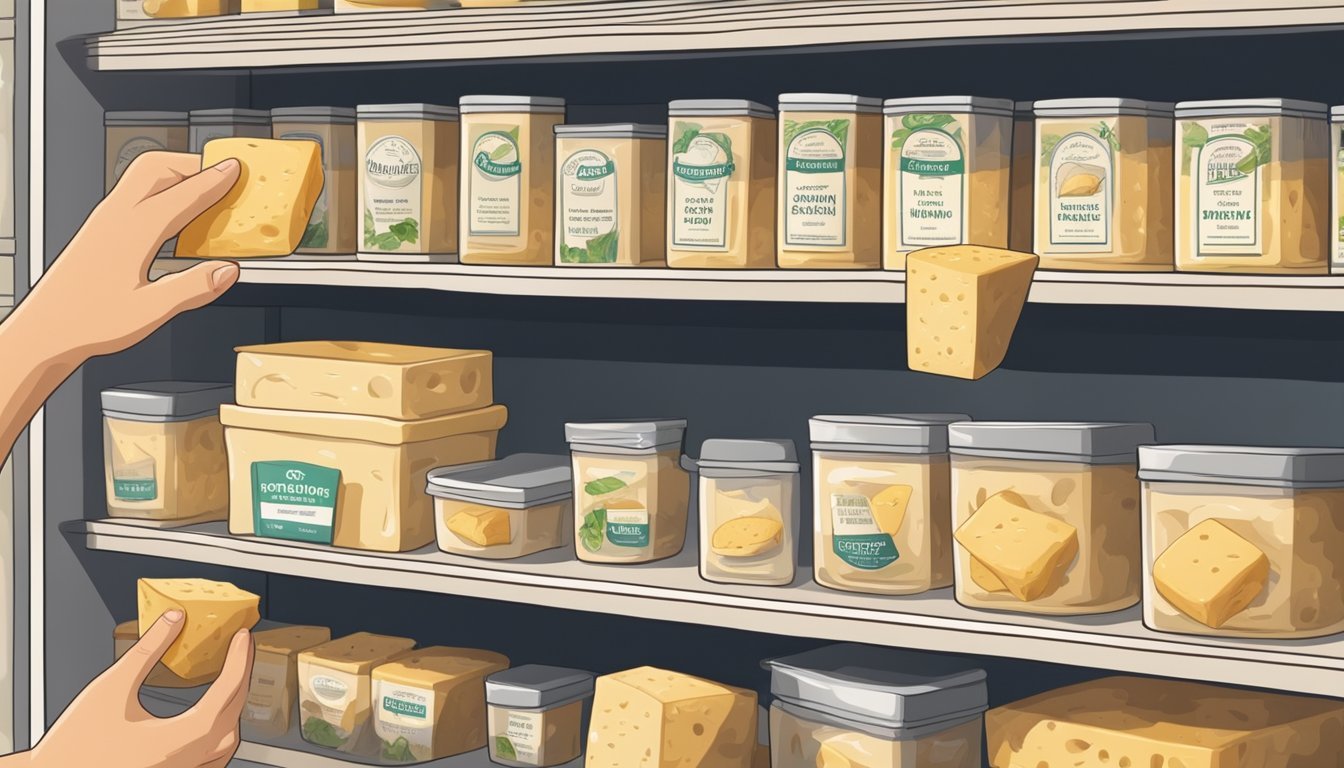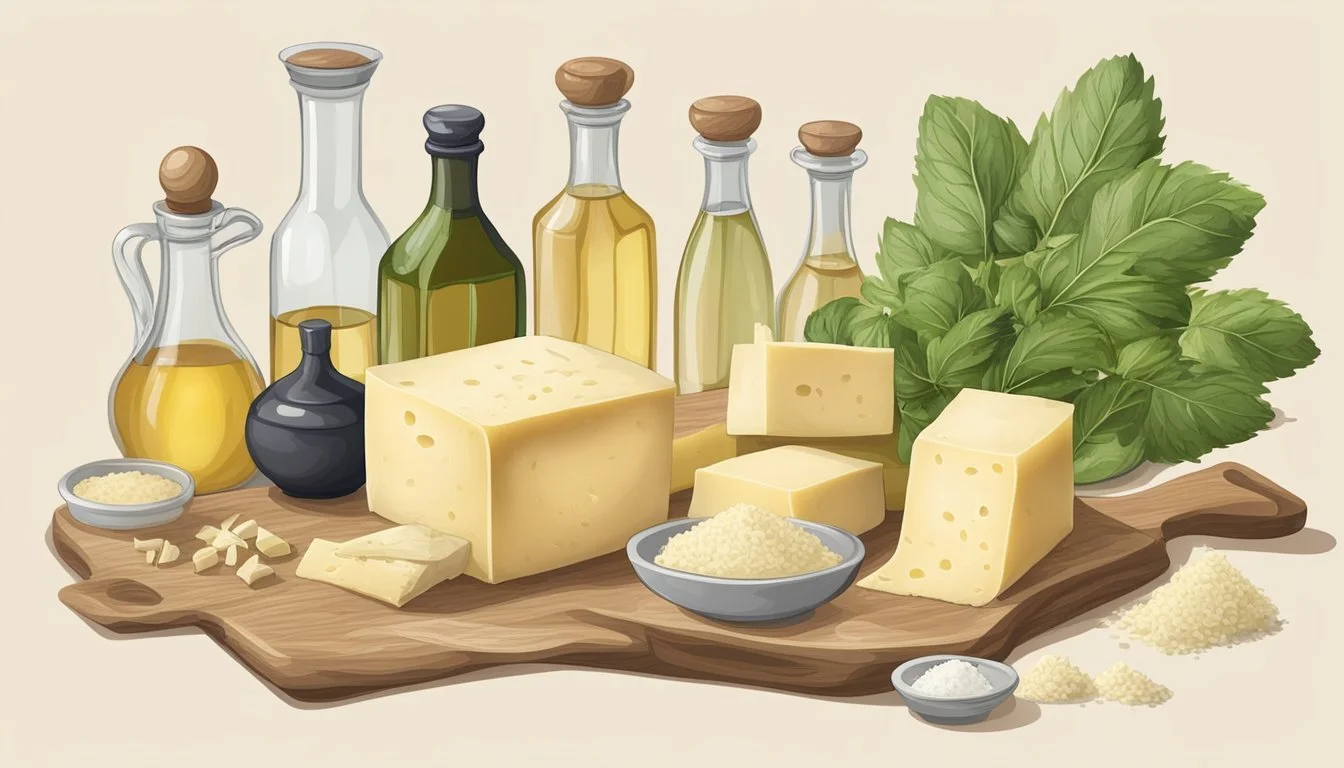How to Substitute Parmesan for Pecorino
Simple Cheese Swap Guide
Substituting Parmesan for Pecorino in recipes can often be done with ease, and understanding the nuances between these two Italian cheeses (how long does cheese last?) can help ensure success in the kitchen. Parmesan, a hard cheese with a grainy texture and nutty taste, is made from cow's milk and is a staple in Italian cuisine. Pecorino, on the other hand, is a saltier hard cheese crafted from sheep's milk that tends to have a sharper flavor profile.
When substituting Parmesan for Pecorino, it is essential to consider the differences in flavor intensity and salt content. Parmesan's milder taste and lower salt level relative to Pecorino means that it can be used in greater quantities to achieve a similar flavor impact in dishes. Those looking to replicate the distinctive taste of Pecorino with Parmesan may also adjust their recipes to accommodate the more subtle flavor notes of Parmesan.
Cheese enthusiasts appreciate that both Parmesan and Pecorino bring their unique characteristics to dishes, and while they are interchangeable to a degree, each cheese contributes its own identity. Whether one is making a classic Italian pasta or a modern, inventive entree, the choice between Parmesan and Pecorino can subtly influence the dish's final flavor, showcasing the versatility and importance of these cherished Italian cheeses.
Understanding Cheese Characteristics
When substituting Parmesan for Pecorino, it is crucial to understand their distinct flavor profiles and how their texture and aging process affect their culinary use.
Flavor Profiles of Parmesan and Pecorino
Parmesan, also known as Parmigiano-Reggiano when adhering to authentic Italian standards, is crafted using cow's milk. It offers a complex flavor profile which includes a nutty and slightly sweet taste, coupled with rich umami notes. The taste of Parmesan tends to be less intense than Pecorino but is equally appreciated for its savory qualities.
Pecorino is a sheep's milk cheese which boasts a bold, intensely salty flavor. It is significantly sharper compared to Parmesan and typically exhibits a more pungent scent. The pronounced flavor of Pecorino stands out in dishes, adding depth with its characteristic tang.
Texture and Aging Process
The texture of both cheeses is somewhat granular and crystalline due to the aging process, yet Parmesan generally has a harder texture than Pecorino. This difference is attributed to the varying aging time. Parmesan is aged for a longer period; authentic Parmigiano-Reggiano is aged for at least 12 months, and often up to 36 months. This extensive aging imparts Parmesan with its firmness and enhances its complex flavor.
Pecorino, on the other hand, has a range of aging times. Pecorino Romano, a well-known variety, is typically aged for a minimum of 5 months, which results in a somewhat softer cheese compared to Parmesan. Depending on the type of Pecorino, aging times can vary, influencing the final hardness and graininess of the cheese.
Cheese Type Milk Source Aging Time Texture Flavor Note Parmesan Cow's milk 12-36 months Hard, granular Nutty, umami, sweet Pecorino Sheep's milk 5+ months Semi-hard Bold, salty
Both cheeses are esteemed for their ability to impart depth and enhance the overall flavor of the dishes they are incorporated into. While they share some textural similarities, the notable difference in saltiness and overall intensity must be considered when using them interchangeably.
Identifying Suitable Substitutes
When substituting Parmesan for Pecorino, it’s essential to consider the flavor profile and texture of the replacements to ensure they deliver a similar impact in dishes.
Cheeses Similar to Pecorino
Grana Padano: It’s a less salty and slightly milder cheese compared to Pecorino, but Grana Padano has a fine, grainy texture that can mimic the heartiness of Pecorino in recipes.
Manchego: Originating from Spain, Manchego provides a nutty flavor akin to Pecorino. It can serve well as a substitute, especially if you prefer a slightly buttery and sweet note in your meals.
Asiago: For a fruitier note, Asiago cheese can replace Pecorino. It adds a creamy texture and is versatile across various dishes.
Romano: Often referred to as Pecorino Romano, Romano cheese is a term that encompasses types of this variety. Among them, Pecorino Romano is the most suitable substitute due to its similar salty bite and firm texture.
Non-Dairy Alternatives
Nutritional Yeast: For those seeking a dairy-free alternative that adds a cheesy flavor, nutritional yeast is a solid choice. Its nutty and cheesy taste makes it an excellent option for vegan dishes.
When incorporating these substitutes into dishes traditionally using Pecorino, adjusting the quantity to achieve the desired flavor intensity may be necessary, as the saltiness and mouthfeel can vary among alternatives.
Culinary Applications
When substituting Parmesan for Pecorino in recipes, it is crucial to account for the differences in taste, texture, and melting properties between the two cheeses.
Using Substitutes in Pasta and Salads
Parmesan cheese’s nutty and slightly less salty flavor compared to Pecorino makes it a suitable replacement in pasta dishes and salads. For a classic Cacio e Pepe, one can grate Parmesan over the pasta instead of Pecorino to obtain a rich taste. In salads, Parmesan can be shaved or grated to provide a savory accent without overpowering the other ingredients.
Considerations for Baking and Cooking
While baking or cooking, one should consider Parmesan's lower moisture content, which allows it to melt beautifully, making it ideal for gratins, pizza, and sandwiches. A recipe that calls for Pecorino as a topping or a melted component can effectively utilize Parmesan to achieve a desirable golden crust with a comparable umami flavor.
Pairing with Other Ingredients
When using Parmesan on a cheese board or as part of a pesto, one should pair it with ingredients that complement its milder profile. Accompaniments such as robust charcuterie (What wine goes well with charcuterie?) or a drizzle of aged balsamic can enhance the cheese’s characteristics. Due to Parmesan's versatility, it pairs well with a variety of ingredients across numerous recipes, reinforcing its efficacy as a Pecorino substitute.
Health and Nutritional Aspects
When substituting Parmesan for Pecorino, it is important to consider the health and nutritional aspects of both cheeses. They offer a range of health benefits but differ in salt content, which can be an important consideration for dietary needs.
Managing Salt Intake
Pecorino Romano is known to have a higher salt content compared to Parmesan. This can be a significant consideration for individuals who are monitoring their salt intake due to health issues, such as hypertension.
Pecorino Romano: Higher salt level, may contribute to increased dietary sodium.
Parmesan: Less salty option, providing a lower sodium alternative.
Health Benefits of Cheese
Cheeses like Parmesan and Pecorino offer a variety of health benefits due to their nutritional content. Both are rich sources of protein and calcium, essential for bone health and metabolic functions.
Protein: Both cheeses serve as good sources of protein, which is vital for muscle repair and growth.
Calcium: Parmesan and Pecorino are rich in calcium, important for strong bones and teeth.
Additionally, cheeses can supply other important nutrients such as phosphorus and B-vitamins, although the specific nutrient profile will vary based on the type of cheese and its production method.
Shopping and Storage Tips
When shopping for and storing Italian cheeses like Parmesan and Pecorino, it is vital to discern quality and maintain freshness to ensure the best flavor.
Selecting High-Quality Cheese
Parmesan cheese, recognized often as Parmigiano Reggiano, and Pecorino, a sheep's milk cheese, are both hard Italian cheeses that are integral to various dishes for their salty, umami flavor. In selecting high-quality cheese, one should:
Look for the stamp "Denominazione di Origine Protetta" (DOP) on Italian cheeses like Parmesan, confirming that they're produced according to rigorous standards in a specific region of Italy.
Choose Pecorino based on its type—like Pecorino Romano, Tuscan, Sardo, or Siciliano—which signals the region and potentially distinct flavors.
Preserving Cheese Freshness
To maintain the integrity of these cheeses and maximize their shelf life, adhere to the following storage guidelines:
Wrap cheese firmly in wax paper or parchment paper followed by a loose layer of aluminum foil. This protects against both drying out and absorbing other food odors.
Store hard cheeses like Parmesan and Pecorino in the lowest part of the refrigerator, typically at temperatures between 39°F to 46°F (4°C to 8°C).
For extended storage, Parmesan can be frozen in small portions, while Pecorino is best kept refrigerated to preserve its texture and flavor nuances.
Cultural and Historical Context
When substituting Parmesan for Pecorino, one must consider the rich cultural and historical backdrop from which these cheeses originate, as they are deeply rooted in Italian traditions and geographical significance.
Origin and Production Regions
Pecorino Romano is traditionally made in Lazio, the central region of Italy, as well as on the island of Sardinia. While Pecorino Romano is the most well-known internationally, other Pecorino varieties also exist, such as Pecorino Sardo from Sardinia, Pecorino Toscano from Tuscany, and Pecorino Siciliano from Sicily. These cheeses are protected by PDO (Protected Designation of Origin) status, certifying they are produced using traditional methods within specific regions.
Pecorino Romano: Originated in the Rome area, with production dating back to the Roman Empire.
Pecorino Sardo: Comes from Sardinia, characterized by a milder flavor compared to Romano.
Pecorino Toscano: Hails from Tuscany, known for its sweet and delicate taste.
Pecorino Siciliano: A Sicilian variety, offering a spicy kick to dishes.
Cheese in Italian Cuisine
Italian cuisine holds cheese in high regard, where both Pecorino and Parmesan are staples. Pecorino Romano has a history of being a crucial element, even used as a form of currency for Roman soldiers. Its longevity is attributed to its necessity and versatility in traditional recipes, contributing distinct flavors to classic dishes like pasta alla carbonara and cacio e pepe. Parmesan, or Parmigiano-Reggiano, hails from the regions of Parma and Reggio Emilia and is revered for its granular texture and nutty taste. It serves as a vital ingredient in dishes such as risotto, pesto, and as a topping for various pastas. Both cheeses underscore the depth of Italy's culinary heritage and are essential to its savory dishes.

